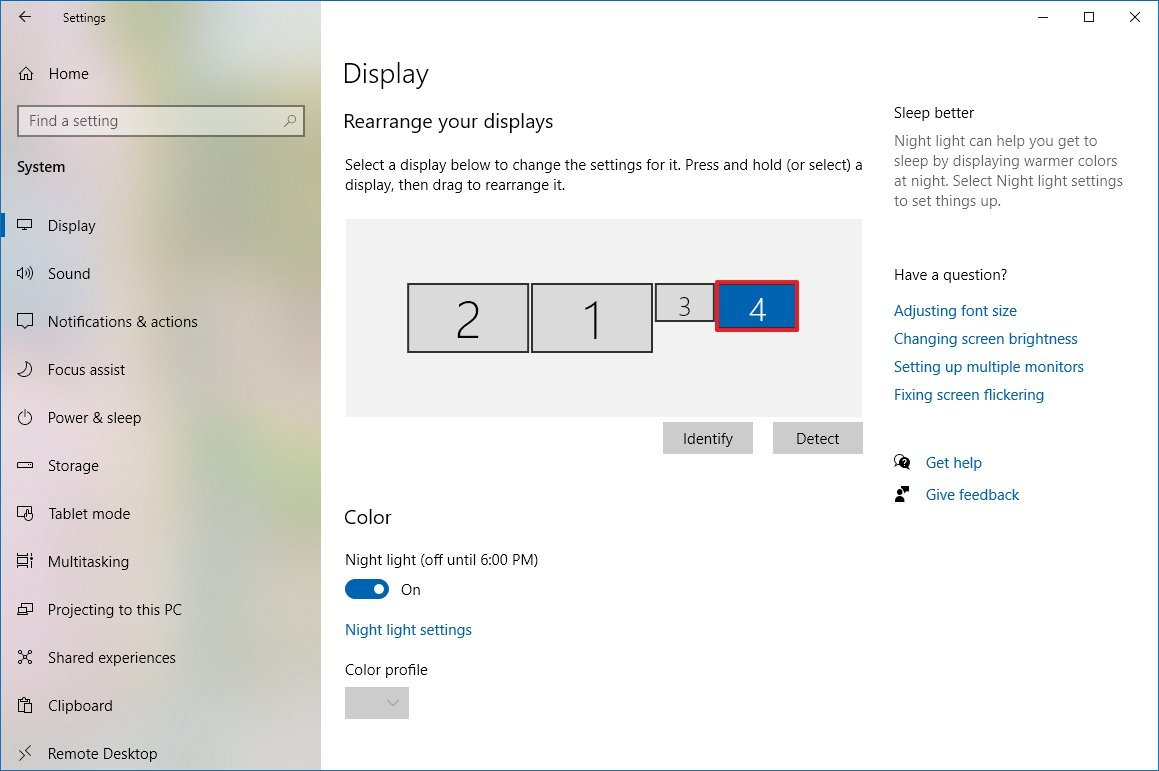How to use screen mirroring on Windows 10 to turn your PC into a wireless display
If you need to expand your screen real estate, and you don't have a second monitor, you can use another Windows 10 computer, and here's how.

Windows 10 includes a screen mirroring feature known as "Project to this PC," which uses the Miracast standard to seamlessly project the contents of the screen to another computer (or supported devices, such as smart TV and streaming sticks like those from Roku) wirelessly within the same local network.
This is a useful feature that can come in handy in many scenarios. For instance, if you have to work from home, and you need a dual-monitor setup to improve your productivity, and you don't have a second monitor. Or you want to connect a laptop to your smart TV (from Sony, Samsung, etc.) to watch videos or play games, but you don't have the required physical connection – just to name a few. It's an invaluable feature that's simple to use.
Whatever the reason it might be, you can use the "Project to this PC" settings along with the "Connect" app to turn a Windows 10 computer into a wireless display without the need for extra hardware or software.
In this Windows 10 guide, we'll walk you through the steps to use another device as a wireless display with the screen mirroring feature built into the system.
How to use PC as a secondary wireless display
If you're looking to screen mirroring on Windows 10, you'll need a source and destination device supporting Miracast technology connected to the same network, and you will need to follow some specific steps.
Destination device (projecting to)
To enable "Project to this PC" feature on the device you want to convert into a wireless display, use these steps:
- Open Settings.
- Click on System.
- Click on Project to this PC.Quick tip: If you see a red message saying: This device doesn't support Miracast, so you can't project to it wirelessly, then it means that you can't use this feature.
- Use the "Some Windows and Android devices can project to this PC when you say it's OK" drop-down menu and select the Always Off option.
- Use the "Ask to project to this PC" drop-down menu and select the Every time a connection is required option.
- Use the "Require PIN for pairing" drop-down menu and select the Never option.
- Open Start.
- Search for Connect and click the top result to open the app.
- Click the arrow button in the titble bar, next to the left of the minimize button, to enter in full-screen mode.
Once you complete the steps, the Connect app will open to accept mirroring connections from another computer.
All the latest news, reviews, and guides for Windows and Xbox diehards.
Source device (projecting from)
To project your screen to another computer on Windows 10, use these steps:
- Open Action Center.Quick tip: You can use the Windows key + A keyboard shortcut, or you can click the Action Center icon in the far right of the taskbar.
- Click the Connect button.
- Click the device you want to project the screen. (It may take a while to appear.)
- (Optional) Check the Allow mouse, keyboard, touch, and pen input from this device option.
After you complete the steps, the screen from the source device should display in the destination device like a secondary monitor.
Customizing the wireless display
Once the connection is configured, the "wireless display" will be available as a regular monitor in the Display settings, which means that you can change its resolution, scale, orientation, as well as set it as extended or duplicate mode.
To customize the wireless display, use these steps:
- Open Settings.
- Click on System.
- Click on Display.
- Under the "Rearrange your display" section, select the wireless display. (Usually, this is the last display on the list.)
- Under the "Scale and layout" section, select the desired scale. (It's recommended to use the same scale value as the other displays.)
- Specify the desire screen resolution.
- Specify the desire display orientation (landscape or portrait).
- Under the "Multiple displays" section, use the drop-down menu and select the Extend (recommended) or Duplicate option depending on your scenario.
After you complete the steps, you can start working on the display wirelessly as it was physically attached to the computer.
In the device you're projecting from, you'll also notice a toolbar. If you click the Settings (gear) button, you'll have three choices (Gaming, Working, and Watching videos) to optimize the stream.
Disconnecting wireless display
If you no longer need to use screen mirroring, you can click the Disconnect button from the toolbar that appears at the top of the primary monitor, or you can use Action Center or Settings app.
To disconnect a wireless display using Action Center, use these steps:
- Open Action Center.
- Click the Connect button.
- Under the device, click the Disconnect button.
If you want to disconnect from the Settings app, open the experience, and then, on System > Display, at the bottom of the page, click the Connect to a wireless display option. Under the device, click the Disconnect button.

Mauro Huculak has been a Windows How-To Expert contributor for WindowsCentral.com for nearly a decade and has over 22 years of combined experience in IT and technical writing. He holds various professional certifications from Microsoft, Cisco, VMware, and CompTIA and has been recognized as a Microsoft MVP for many years.








